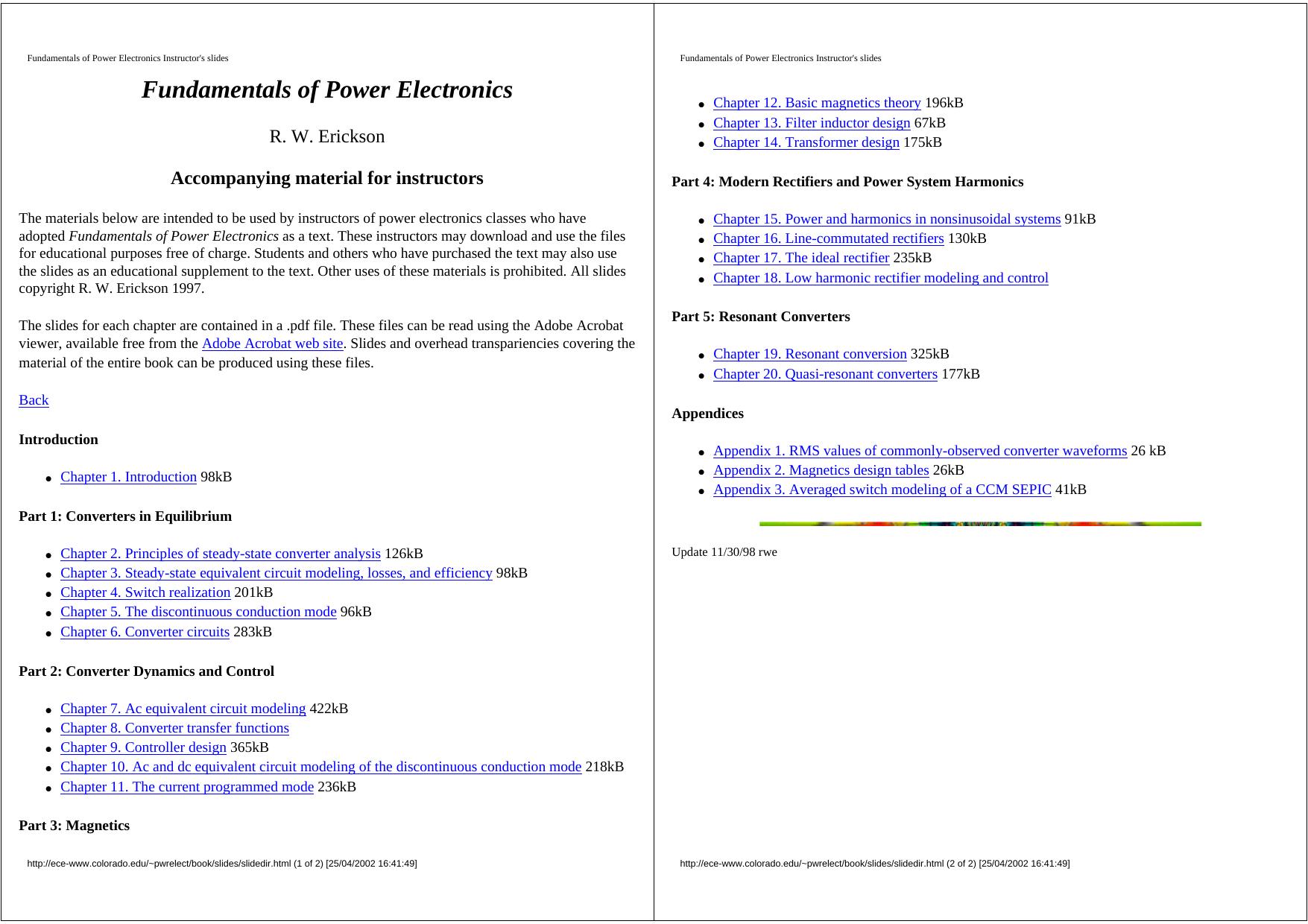Fundamentals of Power Electronics by Robert W. Erickson

Author:Robert W. Erickson
Language: eng
Format: epub, pdf
Publisher: Springer-Verlag Wien 2012
Published: 2013-11-12T16:00:00+00:00
converters are quantitatively quite different from their respective CCM transfer functions. The basic DCM buck, boost, and buck-boost converters essentially exhibit simple single-pole transfer functions, in which the second pole and the RHP zero are insignificant. So the basic converters operating in DCM are easy to control; for this reason, boost and buck-boost converters are sometimes purposely operated in DCM for all loads. The transfer functions of higher order converters such as the DCM Cuk or SEPIC are considerably more complicated; but again, the small inductor value causes one pole to shift to high frequency, where it has negligible practical effect. Since most converters operate in discontinuous conduction mode at some operating points, small-signal ac DCM models are needed, to prove that the control systems of such converters are correctly designed. More detailed analyses predict that the DCM buck, boost, and buck-boost converters indeed exhibit a second pole and a RHP zero, at frequencies near or exceeding the switching frequency [2,4]. A small-signal model of the DCM switch network is derived by linearization of the loss-free resistor model.
It is also possible to adapt the CCM averaged models developed in Chapter 7, to model converters containing switch networks that operate in the discontinuous conduction mode. In the generalized switch averaging technique, an effective switch conversion ratio µ (t) is defined, which is a generalization of the duty cycle d (t) of CCM switch networks. With this approach, equations and models that are valid for the continuous conduction mode are adapted to the discontinuous conduction mode by simply replacing d (t) with µ (t). The generalized switch averaging procedure is described in Section 10.3, and is used in the analysis of an example DCM buck converter.
Download
Fundamentals of Power Electronics by Robert W. Erickson.pdf
This site does not store any files on its server. We only index and link to content provided by other sites. Please contact the content providers to delete copyright contents if any and email us, we'll remove relevant links or contents immediately.
| Alternative & Renewable | Drilling Procedures |
| Electric | Fossil Fuels |
| Mining | Nuclear |
| Power Systems |
Whiskies Galore by Ian Buxton(40332)
Introduction to Aircraft Design (Cambridge Aerospace Series) by John P. Fielding(32338)
Small Unmanned Fixed-wing Aircraft Design by Andrew J. Keane Andras Sobester James P. Scanlan & András Sóbester & James P. Scanlan(32141)
Craft Beer for the Homebrewer by Michael Agnew(17446)
Turbulence by E. J. Noyes(7039)
The Complete Stick Figure Physics Tutorials by Allen Sarah(6638)
Kaplan MCAT General Chemistry Review by Kaplan(6053)
The Thirst by Nesbo Jo(5785)
Bad Blood by John Carreyrou(5769)
Learning SQL by Alan Beaulieu(5411)
Weapons of Math Destruction by Cathy O'Neil(5036)
Man-made Catastrophes and Risk Information Concealment by Dmitry Chernov & Didier Sornette(4736)
iGen by Jean M. Twenge(4702)
Digital Minimalism by Cal Newport;(4541)
Life 3.0: Being Human in the Age of Artificial Intelligence by Tegmark Max(4507)
Audition by Ryu Murakami(4099)
1,001 ASVAB Practice Questions For Dummies by Powers Rod(4038)
Electronic Devices & Circuits by Jacob Millman & Christos C. Halkias(4027)
Pale Blue Dot by Carl Sagan(4001)
